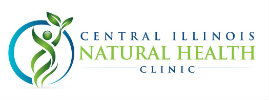A study about organic food published this month in the Annals of Internal Medicine (1) made big headlines, mostly along the lines of “organic food is no better for you than conventionally grown food.” As usual, the headlines tend to gloss over the details of the research that was conducted. Several points are worth noting, to decide whether or not organic fruits, vegetables, eggs, and meat are worth the extra cost:
- This was a review study, not primary research. That is, the authors combed through existing articles from the past 15 years to extract the data. This can confuse the issue, since the previous studies were done in different settings and for a variety of purposes.
- Organic produce does not contain significantly higher levels of vitamins or minerals than conventionally grown produce.
- Eating organic food leads to lower exposure to synthetic pesticides and fertilizers, but the authors point out that the exposure from conventional foods was mostly within the “allowable limits” set by the US government.
- Organic chicken and pork have a greatly reduced risk of carrying antibiotic-resistant bacteria (“superbugs” that are particularly dangerous and difficult to treat).
My view on some of the conclusions reached:
- It has been well known for a long time that organic fruits and veggies are not superior in vitamin or mineral content. However, some studies have suggested that they do have a higher content of phytonutrients — those compounds produced by plants that help protect us against cancer, cardiovascular disease, and other chronic health conditions. Plants are basically chemical factories; without the “protection” of synthetic pesticides, they must cook up their own natural protective compounds, and we get the benefits when we eat those plants.
- Even though pesticide residue on conventional produce is within “safe” limits for daily consumption, we must remember that those chemicals are lipophilic (literally, “fat-loving”). They can stay in our fat tissue for a very long time. How long? A by-product of the pesticide DDT (which was banned in the US in 1972) was still present at significant levels in adults’ fat tissue two decades later (2). So it’s not about keeping the daily dose in a “safe” range; it’s thinking long-term about these carcinogenic compounds (3) building up in the body.
- While we’re on the topic, those synthetic chemicals can even contribute to obesity and diabetes (4).
- Avoiding antibiotic-resistant bacteria is always a good idea; avoiding the residue of antibiotics in meat is also a good idea, since that may disrupt the normal, beneficial microorganisms in our digestive tract.
So for many fruits, vegetables, and meat, I’m sticking with organic. If you need to budget your grocery dollars, check out the Environmental Working Group’s analysis of which foods are highest and lowest in pesticide residue.
- Are Organic Foods Safer or Healthier Than Conventional Alternatives?: A Systematic Review. Ann Intern Med. 4 September 2012;157(5):348-366
- Organochlorine pesticides and polychlorinated biphenyls in human adipose tissue. Rev Environ Contam Toxicol. 1991;120:1-82.
- Adipose tissue levels of organochlorine pesticides and polychlorinated biphenyls and risk of non-Hodgkin’s lymphoma. Environ Health Perspect. 2004 Jun;112(8):854-61.
- Obesity and persistent organic pollutants: possible obesogenic effect of organochlorine pesticides and polychlorinated biphenyls. Obesity (Silver Spring). 2011 Apr;19(4):709-14. Epub 2010 Jun 17.

